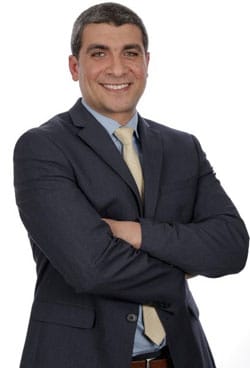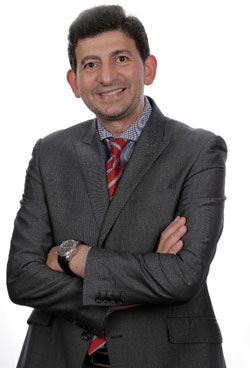AEEDC Education Cairo Workshops
Date : 12 – 14 December 2019
Venue: Royal Maxim Palace Kempinski Cairo, Egypt

12th December, 2019
Orthdontic Course

Impacted Teeth: Challenge in Orthodontics
Dr. Amr Asker
BDS, MSc – Egypt
12th of Dec 2019
Time: 09:00 to 17:30
Venue: Royal Maxim Palace Kempinski Cairo – Room C
Registration fee: 1400 EGP, 325 AED, 88 U$D
Teaching Method: Participation
Seats: Limited to 40 seats
Accreditation: 6 Cr.
Target Audience : – General Dentists, Orthodontic Specialists & PG Students
Introduction:
Dental impaction confronts the practitioner with a serious challenge. Timely treatment for dental impaction is important. Precise diagnosis, an accurate treatment plan coupled with forced eruption using light forces are important to achieve the desired long term results.
The lecture and hands-on workshop will focus on diagnosis, how to choose between different approaches of exposure, open and closed eruption skills, the recent traction procedures and how to get the benefits from mini implants in deep impactions especially canines and molars.
Interdisciplinary care for the orthodontic management of impacted teeth provides a holistic method of treating patients. Careful planning is necessary to reach the desired treatment goals. The lecture and workshop attempts to highlight the importance of diagnosis and adequate treatment planning for successful eruption of impacted teeth to improve the bone morphology around the impacted teeth for better prognosis.
The hands-on workshop will focus on the uses of different tools in traction, application of chains, ligature, traction loops and piggyback technique step by step.
The lecture will be followed by cases discussion of different impaction types including centrals, canines, premolars and molars. Tips and tricks for every situation.
Learning objectives:
- Localization techniques of the impacted teeth
- The importance of the eruption technique on the gingival final outcome.
- Anchorage importance during impacted teeth traction and how to achieve
- How to deal with horizontally impacted cases
- The efficiency of mini implants in tough impactions.
Course Outline:
| 9:00 – 10:30am | Impacted teeth diagnosis and flap design |
| 10:30 – 11:00am | Break |
| 11:00 – 13:00pm | Different types of traction and double wire mechanics |
| 13:00 – 14:00pm | Break |
| 14:00 – 15:30pm | Tough impactions management (centrals-canines-premolars-molars) |
| 15:30 – 16:00pm | Break |
| 16:00 – 17:30pm | Different tractions Hands-on workshop |
Speakers Profile:
Dr. Amr Asker received his BDS from the Faculty of Oral & Dental surgery at Mansoura University in 2006. In 2010 he finished his post graduate study in oral & maxillofacial surgery at Cairo University then he joined orthodontic department at Donau university- Austria where he has gotten his master degree in orthodontics and has become a member of Europe orthodontic society. He is the founder of Asker Orthodontic center and institute which is ADA C.E.R.P (American Dental Association) provider for post graduate orthodontic education and courses, and his practice is limited to orthodontic and multidisciplinary dentistry. At the end of 2011, he became a member of the International Association of Orthodontics-USA. In 2013, he became Damon certified, then international board eligible in orthodontics and implantology in 2015, which helped him a lot in orthodontic implant combination cases, an area of particular interest to him. Dr. Asker specialized in management of impacted teeth, class III cases and micro-implants and has received an award from the Egyptian Association of Implantologists for his lecture about Micro-implant uses in orthodontics.
Provided materials and equipment (for each participant):
- 3d printed cast
- plier
- archwires round and rectangular
- o-ties
- scissors
- prob
- hemostat
- Ligature wire
- elastomeric chain
Procedure and Demonstration Steps:
- Double wire application (piggyback)
- Ligature wire traction of impacted centrals
- Power chain traction of impacted canines (2 methods)
- Gold chain traction of impacted centrals
- Ballista loop application for tough palatal impactions.
- Step bend during the use of piggyback techniques.
12th December, 2019
Endodontic Course 1
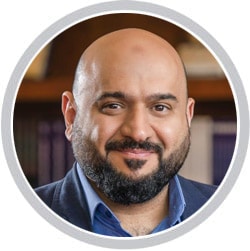
Current Trends in Endodontology, The Adaptive Technique
Dr. Rashid ElAbed
BDS, CO, JB(Endo), UAE
12th of Dec 2019
Time: 09:00 to 17:30
Venue: Royal Maxim Palace Kempinski Cairo – Room A
Registration fee: 1400 EGP, 325 AED, 88 U$D
Teaching Method: Participation
Seats: Limited to 22 seats
Accreditation: 5 Cr.
Target Audience : – General Dentists, Specialists & PG Students
Abstract:
Cleaning and shaping are important components in the treatment of root canal system. It is more correctly to say shaping and cleaning as it reflects the fact that enlarged root canals direct and facilitate cleaning action of irrigants and removal of infected dentin.
Different anatomical and histological studies have demonstrated complexity of root canal anatomy therefore manufacturers compete to provide clinicians with different rotary files that can deliver treatment safely with favorable outcome.
Each rotary system has its unique features in term of cross section, cutting edges, tip design, taper, heat treatment, mass of rotation, rotation direction, and the method of use.
Introduction:
Successful root canal treatment is based on: establishing an accurate diagnosis and developing an appropriate treatment plan; applying knowledge of tooth anatomy and morphology (shape); and performing the debridement, disinfection, and obturation of the entire root canal system.
Evidence has shown that the success of endodontic therapy strongly depends on proper shaping and cleaning of the root canal system before three-dimensional filling. Whereas shaping is primarily aimed at cutting infected dentin and enlarging the root canal space, cleaning mainly consists at removing endodontic pathogens and remaining debris (irritants).
Moreover, Morphologic factors such as lateral and accessory canals, canal curvatures, canal wall irregularities, fins, cul-de-sacs and ishmuses make total debridement virtually impossible. Therefore, the goal of cleaning is not total elimination of the irritants but it is to reduce the irritants.
Currently, several simplified shaping procedures based on the use of a single file along have been launched in the market. Among these are the single file with the adaptive technology introduced for cleaning and shaping root canal system. The unique features are cross section, cutting edges, tip design, taper, heat treatment, mass of rotation, rotation direction, and the method of use.
Learning objectives:
- Advanced Contemporary Endodontic Practice
- Era of NiTi Rotary Instrumentation
- NiTi Rotary Safety & efficiency “Endodontic Glidepath”
- Three-Dimensional obturation
- Introduction to Endodontic Re-treatment
Course Outline:
09:00 – 10:30 Advanced Contemporary Endodontic Practice
10:30 – 11:00 break
11:00 – 12:00 The New era of NiTi Rotary Instrumentation
12:00 – 12:30 Three-Dimensional Obturation
12:30 – 13:00 Introduction to Endodontic Re-treatment
13:00 – 14:00 Break
14:00 – 15:30 Hands on Session 1
15:30 – 16:00 Break
16:00 – 17:30 Hands On Session 2
Speakers Profile:
Dr. Rashid El Abed
Dr. Rashid El Abed Holds a practice limited in endodontics (Using Operating Dental Microscope, Rotary NiTi, Endodontic Ultrasonic, Digital radiography, CBCT, performing one visit RCT etc.) ; lectured and conducted hands-on endodontics courses worldwide and has contributed to several endodontic publications as author and peer reviewer.
Update: Dr. Dana Al Raeesi apologized and won’t be lecturing in this workshop.
Provided materials and equipment (for each participant):
- XP-endo Shaper (to simplify endodontic sequences)
- XP-endo Finisher (to treat root canals with highly complex morphologies)
- D Race (to remove most of the old root-filling material)
Made possible by
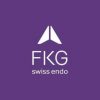
12th December, 2019
Pediatric Dentistry Course
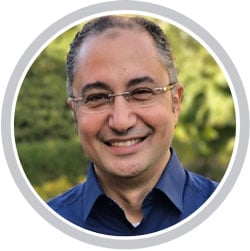
Zirconia Crowns for Young Permanent Molars
Prof. Osama El Shahawy
BDS, MSc, Phd – Egypt
12th of Dec 2019
Time: 09:00 to 12:30
Venue: Royal Maxim Palace Kempinski Cairo – Room B
Registration fee: 800 EGP, 180 AED, 50 U$D
Teaching Method: Participation
Seats: Limited to 30 seats
Accreditation: 2.5 Cr.
Target Audience : – General Dentists, Specialists & PG Students
Introduction: Management of permanent molars in children is an integral treatment modality that should be provided by the pediatric dentist. Full coverage is a key solution for many restorative situations, and as esthetic concerns are high demand by both parents and children, zirconia crowns became a strategic alternative that should be mastered.
Learning objectives:
- To perform proper diagnosis of the case
- To identify the common developmental anomalies that affect these teeth
- To able to decide on the different treatment options
- To be able to perform step by step preparation, seating and cementation of zirconia crowns
- To learn about the clinical tips, follow up and care of these restorations
Course Outline:
09:00 – 10:30 Esthetic Coverage of Permanent Molars
10:30 – 11:00 Break
11:00 – 13:00 Hands On (Preparations on Models)
Speakers Profile:
Prof. Osama El Shahawy
He graduated from the Faculty of oral and dental medicine, Cairo University 1993.
He got his masters degree in paediatric dentistry and dental public health year 1999.
He completed his PhD in Paediatric dentistry from Cairo university year 2004. During this period he worked as a lecturer then associate professor of paediatric dentistry in the same dental school. He published many papers in the field of paediatric dentistry and supervised many master degree and PhD thesis for postgraduate students in paediatric dentistry.
Dr. Osama lectured in many international conference held in Egypt and other countries. He did many courses and workshops on full mouth rehab for children under GA, pulp therapy, full ceramic restoration for primary teeth and management of traumatic injuries.
He is now the head of the Paediatric Dentistry Department, Future University in Cairo, He is the President of ESPSN( The Egyptian Society of Paediatric Dentistry and Children with Special Needs) which is a member society in IAPD ( International Association of Paediatric Dentistry).
Provided materials and equipment (for each participant):
- Micro motors
- Acrylic models with lower permanent molars
- Pedo zirconia crowns
- Preparation burs
- Face Masks
- Disposable examination kit
Procedure and Demonstration steps:
- Demonstration of preparation on first permanent molar
- Candidates will be supervised during doing preparation and crowns seating using try in crowns
Made possible by:
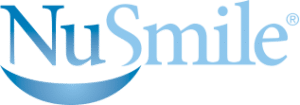
12th December, 2019
Laser Dentistry Course
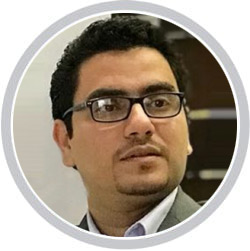

Photobiomodulation: Another Aspect of Laser Dentistry
Dr. Ahmad Abu Shariaa
BDS, MSc (Dental Laser) – UAE
Dr. Mohammed Mohsen Abdelfattah
BDS, M.Sc., PhD Researcher – Italy
12th of Dec 2019
Time: 14:00 to 17:00
Venue: Royal Maxim Palace Kempinski Cairo – Room B
Registration fee: 800 EGP, 180 AED, 50 U$D
Teaching Method: Participation
Seats: Limited to 15 seats
Accreditation: 3 Cr.
Target Audience : – General Dentists, Specialists & Dental Hygienists, Dental Assistants & Dental Students
Introduction:
Regarding the process of Photobiomodulation, power of laser can be controlled, mode sight, period of application can be selected, atraumatic treatment rapid painless and accurate application.
Short treatment period, analgesic effect and wound healing stimulatory effect occurs simultaneously. It is safe, effective method, minimally invasive, no preparation. This process does not require anaesthesia, fast and easy to make.
Finally we will demonstrate all these issues and apply it in many different aspects like muscle spasm, TMJ pain, dentinal hypersensitivity, traumatic injury, osteonecrosis, herpes simplex and many other treatments.
Introduction
Dental Lasers are not used only in cutting or incisions; they have other aspects and uses like photobiomodulation, photodynamic therapy, diagnosis, decontamination.
Photobiomodulation (PBM) therapy or Low level light/laser therapy (LLLT) is a non-thermal process that uses non-ionizing light sources (either the coherent light of lasers or the non-coherent light of LEDs) to induce analgesic effect, promote tissue healing and reduce the inflammation.
Learning objectives:
- Photobiomodulation meaning, Indications and contraindications
- Measurement of the procedure
- Integrate the process in different dental aspects
- Dealing with the clinical targets
- Mechanism and effects of Photobiomodulation
Course Outline:
14:00 – 15:45 Applications of Photomodulation in Dentistry
15:45 – 16:00 Break
16:00 – 17:00 Demonstration
Speakers Profile:
Dr. Ahmed Abu Shariaa
Dr. Ahmed Abu Shariaa has completed his Bachelors in Dental Surgery (BDS) from the faculty of Oral and Dental Medicine, Sanaa University, Yemen, and his MSc Degree in Laser Dentistry from Genova University, Italy.
He has his private practice in Sharjah, United Arab Emirates.
Dr. Mohammed Abdelfattah
Dr. Mohammed Abdelfattah has completed his Bachelors in Dental Surgery (BDS) from the faculty of oral and dental medicine, Cairo University, Egypt and his MSc degree in Laser Dentistry from Genova University, Italy.
He has authored and reviewed various laser dentistry articles in many international journals. He finished his diploma on lasers in dental applications from National Institute of Laser Enhanced Sciences, Cairo University, and has continued to complete additional studies in lasers.
He is currently working in Italy as a PhD researcher in Roma Sapienza University and is a instructor of laser dentistry courses internationally.
Provided materials and equipment (for each participant):
- Gloves
- Laser Device
- Masks
- Protective eye goggles
Procedure and Demonstration steps:
- Manipulation of Device
- Different Hand pieces
- Adjustable and calculated Parameters
- Measurement of the process
- Demonstration on Patient
13th December, 2019
Facial Aesthetics Course
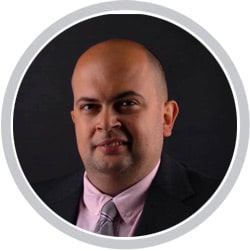
Use of Neuromodulators in Dentistry
Dr. Islam Kassem
BDS, MSc, FDSRCS – Egypt
Sat. 13th Dec 2019
Time: 09:00 to 17:00
Venue: Royal Maxim Palace Kempinski Cairo – Room B
Registration fee: 1400 EGP, 325 AED, 88 U$D
Teaching Method: Participation
Seats: Limited to 30 seats
Accreditation: 6.5
Target Audience: General Dentists, Specialists, Dental Students, Interns, Dental Assistants, Dental Hygienists & Dental Technicians
Abstract:
Facial aesthetics is one of the main pillars of safe dental practice, working to ensure the harmony of the facial element with the dental element.
Introduction:
In the workshop, we will discuss the following:
- Using neurotoxin in dentistry according to the patient’s safety guidelines
- Facial anatomy and Neurotoxin science
- Details on gummy smile, bruxism, and perioral wrinkles
Learning objectives:
- Understand facial assessment
- Evaluate facial deformities
- Discuss the various modalities in management of gummy smile
- Understand the etiology of bruxism
- Discuss the pros and cons of using neurotoxin in facial aesthetics
Course Outline:
09:00 – 11:00 Introduction, Facial attractiveness & Facial anatomy
11:00 – 11:15 Break
11:15 – 12:00 Neuromodulator
12:00 – 13:00 Break
13:00 – 14:45 Gummy smile, Bruxism & Perioral wrinkles
14:45 – 15:00 Break
15:00 – 17:00 Hands on and Live demo
Speakers Profile:
Dr. Islam Kassem graduated from Alexandria Dental School in 2002, and did his residency in the Maxillofacial & Plastic Surgery Department. He has a Master Degree in Oral & Maxillofacial Surgery. He has been qualified from both the Royal College of Surgeons (FRCS) in Glasgow and Ireland in Oral & Maxillofacial Surgery. He maintains a private practice in Egypt, Qatar, and Bahrain.
His special interest is Facial Aesthetics and Laser. He keeps conducting educational courses in Genoa University. As an international speaker, he has been accredited as a speaker for ADA CERP. He is a speaker of more than 15 courses on laser & facial aesthetics.
Provided materials and equipment (for each participant):
- Insulin syringe
- Saline
- Syringe 3 cc
- Topical anesthesia
- Neurotoxin
Procedure and Demonstration Steps:
- Gummy smile
- Master injection
- Facial mapping
Made possible by:
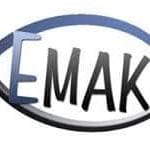
13th December, 2019
Laser Dentistry Course 2

LASER: The Power of Light - “Understanding the mechanism and uses in everyday dental practice”
Dr. Ayman El Amin
BDS, MSc, FAALZ, MWALED, MIADR, FDI – Egypt
13th of Dec 2019
Time: 09:00 to 18:00
Venue: Royal Maxim Palace Kempinski Cairo – Room A
Registration fee: 1400 EGP, 325 AED, 88 U$D
Teaching Method: Participation
Seats: Limited to 25 seats
Accreditation: 6.5 Cr.
Target Audience : – General Dentists, Specialists, & Dental Students
Abstract:
The Workshop will point out the importance of LASER in the dental practice. The Candidate will learn the basic fundamentals of LASER, Different Wavelengths used in Dentistry, differences between Soft Tissue and Hard Tissue LASER, how to use LASER as a tool in everyday dental practice.
Also, the safety tips for LASER usage to protect patients and devices.
Introduction:
LASERs were used in dentistry since 30 years ago but recently they had done a revolution in the dental field especially in Aesthetic and soft tissue applications. On the other hand, LASER can be a magical tool that can shift the treatment plan for a dental procedure 180 degrees into an unexpected results.
Their advantages over the conventional methods includes faster operation time, haemostasis, minimal anaesthesia, less post-operative pain & better healing.
In this Workshop we will cover most of the everyday Aesthetic, soft tissue & dental applications that can be done using LASERs in a fast & convenient way. We will also highlight the using of LASER as a conjunctive aid in solving clinical cases that can’t be easily done using conventional treatment modalities.
Learning objectives:
- The knowledge of LASERS
- How do Lasers Work
- Types of LASERs used in the dental field
- How to determine proper watt and wavelength for best outcome
- Different LASER Wavelengths
- Aesthetic, Surgical & Therapeutic uses of LASER
- LASER’s money gaining uses
- LASER’s Safety Tips
Course outline:
09:00 – 11:00 LASER Basics (Introduction, LASER Physics, How does LASER Works, LASER-Tissue Interaction)
11:00 – 11:15 Break
11:30 – 12:00 Types of LASERs (Soft tissue, Hard tissue, Different Wavelengths)
12:00 – 13:00 Break
13:00 – 15:00 Clinical Applications of LASER (Esthetic, Surgical, Therapeutic, Endodontic, …)
15:00 – 15:15 Break
15:15 – 16:00 LASER Safety
16:00 – 18:00 Hands-on with sheep heads
Speakers Profile:
Dr. Ayman El Amin
- FDI Certified Trainer
- Mastership LASER Dentistry – AACHEN– Germany
- Certified LASER Safety Officer ( LSO ) – AACHEN– Germany
- Fellow World Academy of LASER Dentistry ( AALZ ) – Germany
- Member International Association of Dental Research ( IADR ) – USA
- Assistant Researcher – Restorative Department – National Research Centre
- M. Sc. – Operative Dentistry – Cairo University
Provided materials and equipment (for each participant):
- Gloves and masks
- Water absorbing Napkins
- Water
- Periodontal probe
- Gauze and cotton
- Sheep Heads
- Laser Machines
13th December, 2019
Aesthetic Dentistry Course
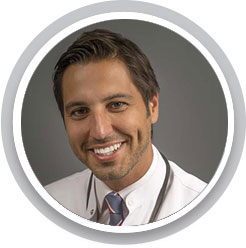
Ceramic Veneers: Fundamentals, Tips and Tricks
Dr. Faysal Succaria
DDS, MSD – UAE
Fri. 13th Dec 2019
Time: 09:00 to 18:00
Venue: Royal Maxim Palace Kempinski Cairo – Room C
Registration fee: 1400 EGP, 325 AED, 88 U$D
Teaching Method: Participation
Seats: Limited to 22 seats
Accreditation: 5.5 Cr.
Target Audience: General Dentists, Specialists, Dental Students & Dental Technicians
Abstract:
The one day course will constitute an amalgam between evidence based lecturing and hands-on training.
The lecture will be an in-depth over view of the steps in chronological order starting from planning all the way to delivery and post-op. This course is specially designed to highlight the laboratory steps that are often overlooked by dental education. In the hands-on, the participants will experience how to design different tooth preparations and provisionalization.
In addition, simplified digital smile design will be demonstrated using alternative cost effective techniques.
Introduction:
Ceramic veneer treatments start with careful planning (case selection, examination, wax-up) followed by multiple clinical and laboratory steps. Many of these steps are technique sensitive, interdependent, and case specific.
Technique sensitivity refers to some of the delicate processes such as bonding and adjustments of the very thin fragile veneers. With accurate bonding protocols, veneers can stay in place for a long time. However, the slightest contamination at bonding or misplacement of the veneer can result in an early failure and de-bonding.
The steps of veneer treatments are, just as in most Prosthodontic treatments, are highly interdependent. A mistake in preparation design can manifest later as a failure in aesthetics or mechanical failure. For example, if the tooth is very discoloured and the preparation is very minimal then the resulting aesthetics will be compromised.
Lastly, these treatments are case specific. The process of planning and executing veneers has to be case-by-case customized. For example mechanically speaking, a 30 year old heavily built bruxer will require a different preparation design than a 50 year old non bruxer.
Learning objectives:
- Plan veneer treatment cases
- Execute precise preparation and impression and provisionalization techniques
- Execute proper bonding
- Take pre and post intra and extra oral photos
- Design proper occlusion
Course Outline:
| 9:00 – 11:00am | Lecture on Ceramic Veneers (Introduction, Treatment planning, preparation design, fit, contacts, bonding, occlusion) |
| 11:00 – 11:30am | Break |
| 11:30 – 12:00pm | Ceramic Materials lecture + Color Management |
| 12:00 – 13:00pm | Break |
| 13:00 – 14:30pm | Demonstration Veneer preparation/Impression/ provisionalization/ Bonding/ Lab Fabrication of veneers |
| 14:30 – 15:00pm | Break |
| 15:00 – 17:00pm | Hands-on preparation + Provisionalization |
| 17:00 – 18:00pm | Photography hands on tips |
Speakers Profile:
Dr. Faysal Succaria is a diplomate of the American Board of Prosthodontics. He currently holds the position of assistant professor at Boston University Institute for Dental Research and Education Dubai in the Department of Prosthodontics. He also holds an appointment as adjunct assistant professor at Boston University Goldman School of Dental Medicine in Boston.
Dr. Succaria completed his pre-doctoral degree in Beirut (2003), Lebanon where he also maintained a private practice. Dr. Succaria completed the dual CAGS/MSD post-doctoral residency program in Prosthodontics (2009) at Boston University. Dr. Succaria has conducted and lectured on biomaterials research and color and is currently involved in ongoing research on ceramics.
Provided materials and equipment (for each participant):
- Dentoform Typhodont
- Handpiece
- Burs
- Impression materials
- Provisional materials
Procedure and Demonstration Steps:
- Veneer Preparation Type I, II, III
- Impressions
- Provisionalization (2 techniques)
- Cementation protocols
- Patient Photography (Intra Oral & Extra Oral)
14th December, 2019
Restorative Course
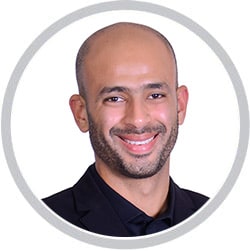
Recipes for Successful Direct Posterior Restoratives
Dr. Ahmed Tarek Farouk
BDS, MDS (Restorative) – Egypt
14th of Dec 2019
Time: 09:00 to 17:00
Venue: Royal Maxim Palace Kempinski Cairo – Room A
Registration fee: 1400 EGP, 325 AED, 88 U$D
Teaching Method: Participation
Seats: Limited to 20 seats
Accreditation: 5.5 Cr.
Target Audience: General Dentists, Specialists, & Dental Students
Abstract
Direct posterior resin composite has become a solution for many obstacles that face the practitioners in their daily practice.
Nowadays, Modern adhesive restorative dentistry offers immediate restoration of defected tooth, bringing it in to anatomical, functional and esthetical harmony.
Yet, it is important to understand how we can deal with the material in terms of getting the maximum benefits and overcome its drawbacks. The aim of this workshop is getting through the work flow necessary for mastering direct restoration of posterior teeth following recent and updated scientific evidence.
Introduction:
Dental esthetics and minimal invasiveness have become increasingly important during the last decade when considering diagnosis and treatment planning.
Nowadays, Composite resins occupy a paramount position among restorative materials because they offer excellent aesthetic potential and acceptable longevity with a much lower cost than equivalent ceramic restorations for the treatment of both anterior and posterior teeth.
In addition, composite restorations allow for minimally invasive preparations or no preparation at all when assuming the replacement of decayed or missing tissue becoming a popular alternative to the more traumatizing prosthetic restorations.
Learning objectives:
1. Apply the modern concepts of minimal invasive dentistry
2. Select the most appropriate cavity design during preparation of the posterior teeth
3. Chase the best available evidence in literature about recently proposed protocols for durable bonding outcomes.
4. Select the resin composite system that fits the working style of the operator.
5. Apply a more predictable finishing and polishing protocol to obtain a highly esthetic restoration.
Speaker Profile
Dr. Tarek is a restorative and esthetic specialist. He earned his master degree in the filed of conservative and esthetic dentistry from Cairo University.
He works as Staff Member as Assistant Lecturer at the Restorative Dentistry Department, Misr International University. He is also an International Speaker in the Field of Restorative Dentistry. He is a Visiting lecturer in many private and public universities. He is also a Restorative Instructor in many national and international courses.
He is an active member in the American Acadamy of Cosmetic Dentistry and a member in the International Association for Dental Research. He was a Former Visiting Lecturer at University of Dundee Restorative Master Program in Egypt. He is Key opinion leader (KOL) and Scientific Speaker for several international companies. He is developing many techniques in collaboration with many international companies.
Course outline:
09:00 – 11:00 State of Art of practicing Minimal Invasive Dentistry ( concepts, Modern Cavity Design and the proximal profile concept and how to restore it)
11:00 – 11:30 Break
11:30 – 13:00 Restorative work Flow Starting with pre-wedging, Matrix selection, Isolation, Simplified protocols to master anatomy reproduction and ending by finishing and polishing
13:00 – 14:00 Break
14:00 – 14:45 Demonstration cavity class II from matricinig to finishing and polishing step by step
14:45 – 17:00 Hands on
Provided materials and equipment (for each participant):
- Micromotor with low speed hand piece
- Prepared Posterior cavities
- Resin composite modelling tools
- Resin composite
- Sectional Matrix system
- Finishing and polishing system
- Light curing units
- Painting brushes
Procedure and Demonstration Steps:
- Proximal Matrix Selection
- Resin Composite Ring Placement
- Bonding procedure
- Resin Composite Build-up
- Finishing and Polishing
14th December, 2019
Endodontic Course 2

The Big Bang in Endodontics: Clinical Utilization of NiTi phase transformation
Prof. Khaled Balto
BDS, DMSc, PhD – KSA
14th of Dec 2019
Time: 09:00 to 18:00
Venue: Royal Maxim Palace Kempinski Cairo – Room C
Registration fee: 1400 EGP, 325 AED, 88 U$D
Teaching Method: Participation
Seats: Limited to 20 seats
Accreditation: 5.5 Cr.
Target Audience : – General Dentists, Specialists, Dental Students, Interns & Academicians
Abstract:
Differences in mechanical properties between endodontic instruments might be related to the chemical composition, phase constitution, or manufacturing process.
An awareness and knowledge of the mechanical properties of NiTi endodontic files and their association with the metallurgical properties is useful for clinicians to understand the behaviour of NiTi instruments in root canals and help them to make decisions regarding which instruments are appropriate for root canal therapy under certain clinical conditions.
In this course, we will explore- in clinical platform- the mechanical properties of NiTi endodontic instruments including the flexibility, torsional resistance, flexural resistance, and cyclic fatigue of the conventional super elastic NiTi instruments and the most recently developed novel NiTi instruments with martensitic files with special emphasis on One Curve.
Enhanced clinical utilization of this martensitic file-one curve- will be presented in a heavy multi-media presentation.
Introduction:
The first NiTi file was introduced to the market in 1991. Superelasticity and shape memory are the properties that make Niti files very flexible.
The high flexibility of Niti files makes them superior to stainless steel files for the purpose of rotary root canal preparation.
The use of NiTi rotary files in dentistry is a common practice.
Learning objectives:
- Discuss the limitation of the traditional rotary NiTi files
- Enumerate the procedural errors caused by traditional rotary NiTi files and have a mental image of how it could be prevented
- Outline the advantages of manufacturing rotary NiTi files in a martensitic form and address the ideal requirements in such a file
- Enumerate and clinically correlate the properties and procedural details of One curve
- Acquire skills in preparing a 3D printed tooth with the One Curve technology
Course outline:
09:00 – 11:00 Lecture on Minimally Invasive endodontics: Mind plans and Clinical applications
11:00 – 11:30 Break
11:30 – 13:00 Benefits of heat treatment of NiTi in endodontics: the One Curve Concept
13:00 – 14:30 Break
14:00 – 15:00 Micro-demonstration on on 3D block resin showing the kinetics of One Curve.
15:00 – 15:30 Break
15:30 – 17:30 Hands on training
17:30 – 18:00 Concluding remarks and Photography
Speakers Profile:
Khaled Balto graduated from King Abdulaziz University school of dentistry in 1993. In 2001 he got a certificate of endodontics from Harvard school of dental medicine and Doctor of Science degree in Oral biology-immunology from Harvard University, school of medicine. At the same year, he was awarded the Alvin Krakow award from Harvard University for outstanding achievements in research, clinical care, and professionalism in endodontics.
Currently, Dr. Khaled is a professor and chair of endodontics at King Abdulaziz University. Director for postgraduate studies and training programs in endodontics and deputy director for the osteoporosis research center in KSA. Dr.Khaled holds private practice limited to micro-endodontics in Jeddah, Saudi Arabia.
Dr.Khaled has been lecturing extensively nationally and internationally since 2003. Has contributed with more than 280 lectures and 77 full day or two days endodontic courses with a hands-on training component. He also has many indexed publications in the field of clinical endodontics and in the fields of basic science related to endodontics.
Provided materials and equipment (for each participant):
- 3D printed tooth
- Once curve file
- One flare
- One G
- Hand files
Procedure and Demonstration Steps:
- Micro-preparation with One Curve
- Full root canal instrumentation with One curve approach
Made possible by


INDEX Conferences and Exhibitions Organisation Est. is an ADA CERP Recognized Provider.
ADA CERP is a service of the American Dental Association to assist dental professionals in identifying quality providers of continuing dental education. ADA CERP does not approve endorse individual courses or instructors, nor does it imply acceptance of credit hours by boards of dentistry.
